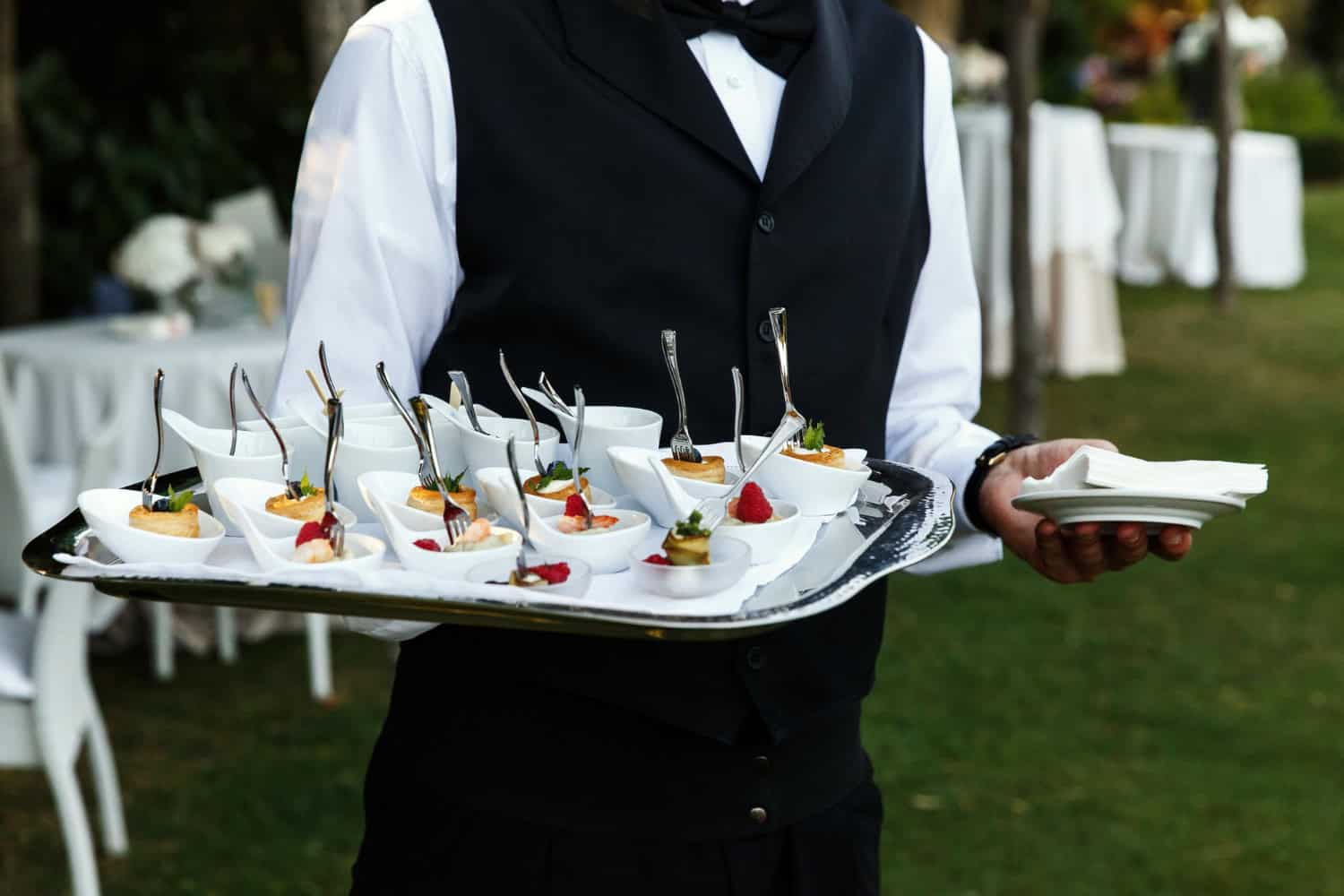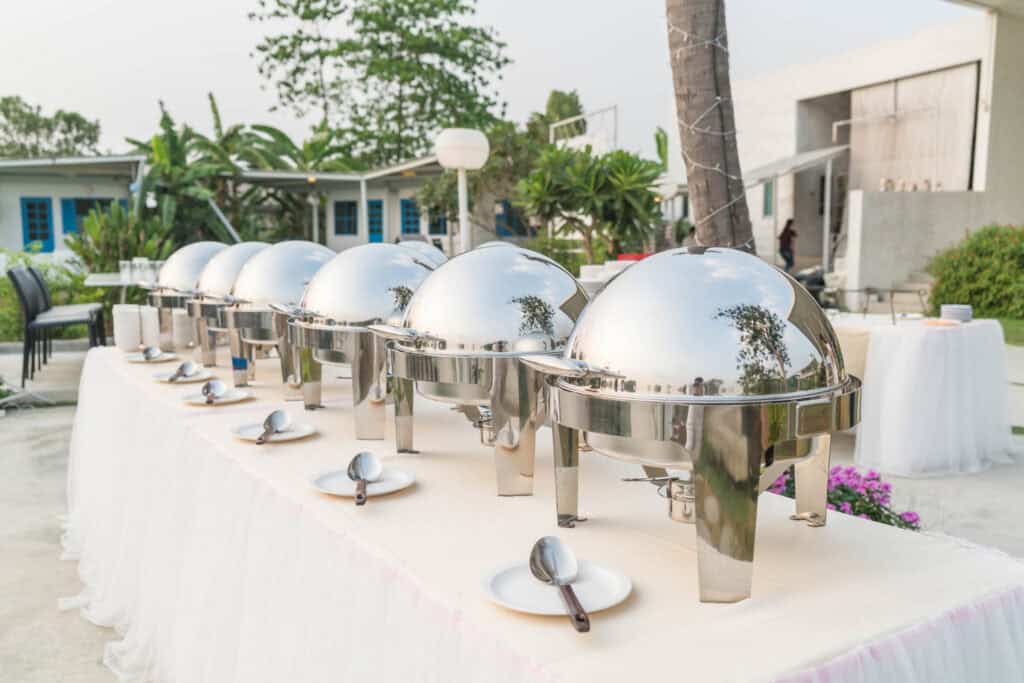
By Jermaine Thomas March 19, 2025
Catering for an outdoor event can be both exciting and daunting. While it provides a stunning natural setting and an unforgettable experience, it also presents a number of unexpected challenges. From unpredictable weather to logistical challenges, outdoor catering requires meticulous planning and problem-solving abilities.
Why Outdoor Catering is Gaining Popularity
Outdoor events are becoming more popular for weddings, corporate functions, festivals, and private parties. The appeal of open-air settings, fresh ambiance, and scenic backdrops makes them highly desirable. However, while these events provide an unforgettable experience, they require specialized planning to address challenges that indoor venues do not.
Unlike conventional indoor catering, where climate control, kitchen facilities, and infrastructure are readily available, outdoor catering requires adaptability. Catering professionals must be prepared for unexpected changes, from fluctuating temperatures to last-minute adjustments in setup.
The Challenge of Weather: A Constant Uncertainty
Outdoor catering is always at the mercy of the weather, making it one of the most unpredictable aspects of event planning. Unlike indoor venues, where temperature and ambiance can be controlled, open-air events are exposed to natural elements. This means caterers must be prepared for sudden rain, extreme heat, strong winds, or even unexpected cold snaps that can disrupt both food service and guest comfort.
1. Unpredictable Weather Conditions
One of the biggest concerns in outdoor catering is the weather. Unlike indoor events, where temperature and ambiance can be controlled, outdoor venues are at the mercy of nature. Sudden rain, strong winds, or extreme heat can disrupt food preparation, service, and guest comfort.
Catering teams should always have a backup plan. This includes investing in strong tents, windproof food setups, and mobile kitchen units that can function in a variety of weather conditions. Furthermore, keeping perishable food away from heat and excessive moisture is critical for maintaining quality and hygiene.
2. Seasonal Considerations
Different seasons bring distinct challenges. Summer events may require cooling solutions to prevent food from spoiling and to keep guests comfortable. Winter events, on the other hand, might require portable heaters and insulated containers to keep meals warm. Even mild spring or autumn days can bring unexpected chills or sudden showers.
Checking long-term weather forecasts, choosing venues with partial indoor options, and maintaining constant communication with event planners can help mitigate these risks.

Logistics for Open-Air Events: Planning for the Unexpected
Catering an outdoor event requires far more than simply preparing delicious food. The logistics of transporting, preparing, and serving meals in an open-air setting can be extremely complex. Outdoor locations require more effort to arrange equipment, ensure food safety, and manage accessibility challenges than indoor venues that have built-in facilities. Even the best-planned event can suffer unexpected setbacks if not carefully coordinated.
1. Transportation and Setup
Unlike traditional venues, where catering teams can rely on built-in facilities, outdoor catering requires the transportation of every essential item. This includes food, cooking equipment, serving stations, furniture, and décor.
Getting everything delivered on time necessitates well-organized transportation logistics. The terrain of the event venue is also important—grassy fields, sandy beaches, or hilly landscapes can make unloading and setting up more difficult. Having the right vehicles and anticipating potential roadblocks, such as narrow pathways or a lack of parking, is critical.
2. Power Supply and Lighting
Outdoor venues often lack power sources required for food preparation, heating, and refrigeration. Catering teams must arrange for generators and ensure they have enough fuel to last the entire event.
Lighting is another major factor. Evening events require proper illumination not only for ambiance but also for safe food preparation and service. Battery-powered or solar-powered lighting solutions can be effective in remote locations.
Mobile Kitchens: A Must for Outdoor Catering
Outdoor catering requires adaptability, and having a fully functional mobile kitchen is frequently the most effective way to ensure food is fresh, hot, and served on time. Unlike traditional indoor venues with built-in cooking and storage facilities, outdoor events require a kitchen setup that can function efficiently in any location. From food preparation to plating and serving, a mobile kitchen serves as the foundation of any outdoor event. However, establishing and managing these kitchens presents a unique set of challenges that require careful planning and execution.
1. The Role of Mobile Kitchens
A mobile kitchen is a lifesaver for outdoor catering, allowing chefs to prepare and serve fresh meals on-site. Unlike indoor catering, where full-fledged kitchen setups are available, mobile kitchens need to be fully equipped with stoves, grills, refrigeration units, and prep areas.
These kitchens help maintain food quality, ensuring meals are served hot and fresh, rather than pre-prepared hours in advance. However, setting up a mobile kitchen comes with its own challenges, including water supply, waste disposal, and space constraints.
2. Storage and Waste Management
Food storage must be carefully managed to maintain freshness. Outdoor catering often requires portable coolers and refrigeration units, especially for dairy, meat, and seafood products.
Additionally, waste disposal is a major concern. Unlike indoor venues, where waste can be easily managed, outdoor events require designated disposal zones and environmentally friendly solutions such as compostable plates and biodegradable waste bags.
Event Planning: Coordinating with Multiple Stakeholders
Catering an outdoor event isn’t just about food—it’s about seamless coordination with multiple teams, including event planners, decorators, venue managers, and technical staff. Every element, from table arrangements to timing the food service, must align perfectly with the overall event schedule. Unlike indoor catering, where most logistics are controlled within a confined space, outdoor catering requires continuous collaboration to adapt to unexpected changes. This makes communication and flexibility essential for ensuring a successful event.
1. Communication with Event Planners
For a smooth execution, catering teams must work closely with event planners, venue managers, and other service providers. Coordination is essential for ensuring that everything runs smoothly, from setting up tables to timing food service with speeches, entertainment, and other activities.
It’s important to conduct site visits in advance, discussing layout plans, guest flow, and emergency protocols. Clear communication with clients about menu selection, dietary restrictions, and service styles is also essential for customer satisfaction.
2. Staffing and Training
Outdoor catering requires a well-trained team capable of adapting to different environments. Unlike controlled indoor settings, outdoor venues may have uneven ground, limited workspace, and unexpected distractions.
Staff must be trained in quick problem-solving, efficient food handling, and guest interaction. Waitstaff should also be prepared to navigate through outdoor spaces, ensuring guests receive prompt service regardless of the venue’s layout.
Maintaining Food Quality and Safety
One of the most difficult elements of outdoor catering is ensuring that the food remains fresh, safe, and delicious throughout the event. Outdoor venues expose food to fluctuating temperatures, humidity, and environmental contaminants, as opposed to indoor settings with controlled conditions such as kitchens and storage areas. Maintaining strict hygiene standards and using proper storage techniques is critical for preventing food spoilage and providing a pleasant dining experience for guests. Without careful planning, even the best-prepared dishes can lose their appeal or, worse, become unsafe to eat.
1. Ensuring Food Freshness
Temperature control is one of the biggest challenges in outdoor catering. Without proper cooling solutions, perishable foods can become unsafe to consume. Refrigerated transport, insulated food containers, and well-timed meal preparation are key to avoiding spoilage.
Serving food at the right temperature is equally important. Dishes that require heating must be kept warm using chafing dishes or portable heating stations, while cold dishes should be protected from heat exposure.
2. Hygiene and Sanitation
Maintaining high hygiene standards in an outdoor setting is another challenge. Unlike restaurant kitchens, which are equipped with proper sanitation stations, outdoor setups require portable hand-washing units, disposable gloves, and strict waste management.
It’s also important to protect food from external contaminants, such as dust, insects, and airborne debris. Using covered serving trays, food-safe tents, and insect-repelling solutions can help ensure a hygienic environment.

Handling Last-Minute Challenges
Even with the most meticulous planning, last-minute challenges are unavoidable in outdoor catering. Catering teams must be ready to adapt to unexpected changes in guest count, sudden weather shifts, or equipment failures. Unlike indoor venues, where changes can be made more easily, outdoor settings require quick decision-making and adaptability. Contingency plans, as well as a team capable of dealing with pressure, are critical to ensuring a successful event.
1. Guest Count Fluctuations
One of the most common last-minute challenges in outdoor catering is an unexpected change in the number of guests. While indoor venues often have fixed seating capacities, outdoor settings can be more flexible—but this also means catering teams must be prepared for sudden increases or decreases in guest count.
Having extra food supplies, backup serving stations, and a flexible staffing plan can help handle last-minute changes smoothly.
2. Emergency Preparedness
Even with careful planning, unexpected situations can arise, such as sudden weather changes, equipment malfunctions, or logistical delays. An emergency plan, which includes extra supplies, backup generators, and contingency menus, ensures that the event runs smoothly and without major disruptions.
Conclusion
Catering outdoor events comes with unique challenges that require careful planning, adaptability, and problem-solving skills. From dealing with unpredictable weather and logistical hurdles to setting up mobile kitchens and ensuring food safety, every aspect must be meticulously managed.
By preparing for common obstacles and maintaining strong communication with event planners, catering teams can deliver seamless and memorable dining experiences. While outdoor catering is demanding, it also offers immense opportunities for creativity and customer satisfaction. With the right approach, even the toughest challenges can be turned into successful events.